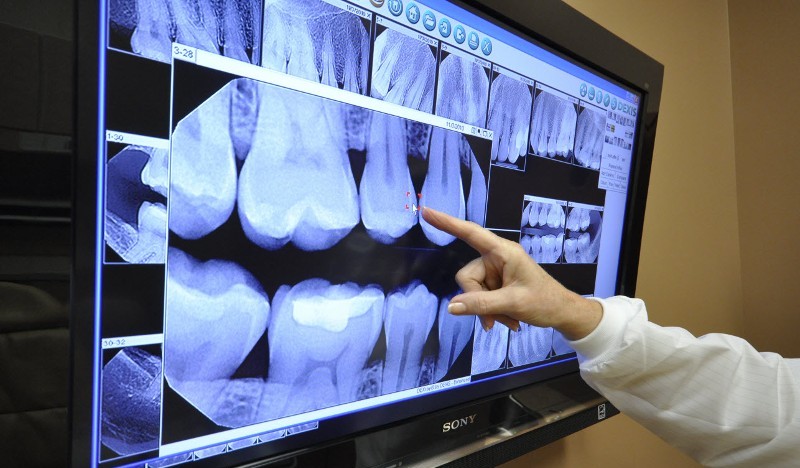ALL >> Health >> View Article
Dynamic Digital Radiography: A Moving Perspective On Medical Imaging

In the ever-evolving landscape of medical imaging technology, advancements continue to push the boundaries of what's possible. One such innovation that's revolutionizing the field is dynamic digital radiography (DDR). This groundbreaking technique offers unprecedented insights into the human body's dynamics, providing healthcare professionals with a dynamic view of anatomical structures in real-time.

Let's delve into the world of DDR and uncover its remarkable capabilities.
Understanding Dynamic Digital Radiography
Dynamic Digital Radiography, also known as X-ray fluoroscopy, represents a significant leap forward in radiographic imaging. Unlike conventional static X-rays, which capture a single moment in time, DDR captures and displays moving images of the body's internal structures. This dynamic visualization offers invaluable information about physiological processes, joint function, ...
... and anatomical movements.
How Dynamic Digital Radiography Works
Dynamic Digital Radiography (DDR) works by capturing moving images of the body's internal structures in real-time, providing healthcare professionals with a dynamic view of anatomical movements and physiological processes.
At the heart of DDR lies advanced digital radiography technology combined with fluoroscopy. Conventional X-ray devices emit a constant flow of X-ray photons through the body, which are then detected to generate an image. In DDR (Digital Radiography), this procedure is optimized with specialized software and hardware to facilitate swift image capture and processing.
As the patient undergoes the imaging procedure, a series of X-ray images are captured in real-time. These images are then reconstructed into a dynamic sequence, allowing healthcare professionals to observe the movement and function of bones, joints, and soft tissues.
Whether it's assessing joint mobility, evaluating spinal alignment, or diagnosing musculoskeletal disorders, DDR provides unparalleled insights into the body's biomechanics.
Applications of Dynamic Digital Radiography
The applications of DDR are vast and diverse, spanning various medical specialties. Orthopedics, sports medicine, rheumatology, and pulmonology are just a few areas where DDR has made a significant impact. Let's explore some of the key applications in more detail:
Orthopedics and Sports Medicine
In orthopedics and sports medicine, DDR plays a crucial role in assessing joint function, detecting abnormalities, and guiding treatment decisions. By visualizing the dynamics of joints during movement, orthopedic surgeons can diagnose conditions such as ligament tears, joint instability, and osteoarthritis with greater precision.
DDR also helps in evaluating the efficacy of orthopedic interventions, such as joint replacement surgeries or ligament repairs, by monitoring post-operative recovery and rehabilitation.
Rheumatology
Dynamic Digital Radiography is particularly valuable in the field of rheumatology for diagnosing and monitoring inflammatory joint diseases like rheumatoid arthritis. By visualizing the progression of joint damage over time, DDR aids in early detection, assessment of disease severity, and treatment planning.
Rheumatologists can closely monitor disease activity, evaluate response to medication, and adjust treatment strategies, accordingly, leading to improved outcomes for patients with rheumatic conditions.
Pulmonology
In pulmonology, DDR offers a unique perspective on respiratory function and lung mechanics. By capturing dynamic images of the chest during breathing, healthcare providers can assess lung ventilation, diaphragmatic movement, and airway patency.
DDR is particularly useful in diagnosing conditions such as chronic obstructive pulmonary disease (COPD), asthma, and pulmonary fibrosis, as well as evaluating the effectiveness of interventions such as bronchodilator therapy or pulmonary rehabilitation.
Advantages of Dynamic Digital Radiography
Dynamic Digital Radiography offers several advantages over traditional imaging modalities, making it a preferred choice for many healthcare providers and patients alike:
Enhanced Diagnostic Accuracy
By visualizing anatomical structures in motion, DDR provides a more comprehensive understanding of musculoskeletal and physiological dynamics, leading to more accurate diagnoses and treatment planning.
Reduced Radiation Exposure
DDR employs advanced imaging techniques that optimize radiation dose while maintaining image quality, minimizing the risk of radiation exposure to patients and healthcare providers.
Improved Patient Comfort
The real-time nature of DDR allows for faster imaging procedures, reducing patient discomfort and anxiety associated with prolonged exposure times.
Enhanced Surgical Planning
In surgical specialties, DDR facilitates precise preoperative planning by providing surgeons with detailed insights into anatomical structures and functional dynamics, leading to better surgical outcomes and reduced complications.
The Future of Dynamic Digital Radiography
As technology continues to evolve, the future of Dynamic Digital Radiography holds tremendous promise. Advancements in imaging hardware, software algorithms, and artificial intelligence are poised to further enhance the capabilities of DDR, enabling even more precise diagnosis, personalized treatment planning, and improved patient outcomes.
With its ability to capture the complexities of human anatomy and physiology in motion, Dynamic Digital Radiography is poised to revolutionize the practice of medicine and redefine the standards of diagnostic imaging.
Hello, this is Baleshwar Yadav I am a Mechanical Engineer. I am very found of writing articles and reading them. My hobbies are reading books and writing articles.
Add Comment
Health Articles
1. Which Type Of Fruits Increase Sperm Count?Author: Surrogacy Centre India
2. How To Use Paragard Allwormer For Dogs And Cats?
Author: VetSupply
3. 5 Steps To Increase The Longevity Of Your Dental Implants
Author: Shallowford Dental Studio of Roswell
4. What To Expect During An Eye Exam In Tucson
Author: Catalina Eye Care
5. Understanding Epilepsy: Symptoms, Causes, And Effective Treatment Options
Author: lisa miracle
6. Level 5 Care Management
Author: Accessskills
7. Can Teeth Straightening Lead To Gum Problems Like Recession?
Author: Ryan Daniel
8. Everything You Need To Know About Dental Implants: A Comprehensive Guide
Author: Dr. Nimit Garg
9. Probiotics Supplement Manufacturers
Author: vakyaprob
10. Stay Active And Focused With The Best Energy Drink
Author: Yash
11. Infection Control In Healthcare: The Role Of Utopia-aire Isolation Rooms In Singapore
Author: Utopia Aire Pte Ltd
12. Discovering Top-quality Dental Care In Annerley: Your Guide To A Healthy Smile
Author: My implant dentist
13. Go For Dental Extraction If You Are Having Cavity Issues
Author: Pearl Dental Surgery
14. Skokie Dental – Smiles Made Simple
Author: Dr Tariq Hafeez
15. How To Prepare For A Successful Ivf Cycle?
Author: SCI IVF Hospital








